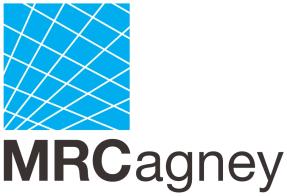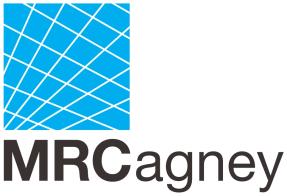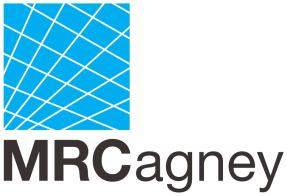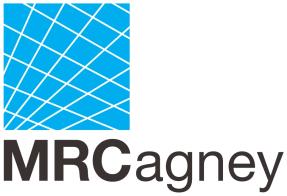link to page 1

PO Box 3696, Shortland Street, Auckland 1010
T: +64 9 377 5590
Level 4, 12 O’Connell Street, Auckland 1010
F: +64 9 377 5591
E:
[email address]
m
www.mrcagney.com
MRCagney Pty Ltd
Company Number:
1317981
Technical Note
Subject: Bus Stop Capacity Field Observations
Project: Bus Reference Case
Our file: NZ2026
Date: 3 December 2015
Prepared
Status: Draft for Discussion
LC
by:
1. Methodology
To test the calculations in the
Capacity Calculations Technical Note, field observations have been
carried out at various CBD bus stops. The stops in question were selected to present a variety of
types of stop operations, covering size of stops, mix and quantity of services, and including both
inbound and outbound stops. The observations were all carried out on the evening of Monday,
November 30. Stops were filmed with a GoPro camera for periods of 15 to 25 minutes during the
evening peak period.
All buses that frequented the stop were counted, and buses were counted as being in the stop if
they were either parked in the stop, or attempting to leave or depart the stop, but were blocked by
other buses or vehicles. This way both the volume of buses using the stop, and how often the
demand exceeded stop capacity could be counted.
The surveyed stop locations are outlined in
Table 1
Table 1: Surveyed stop locations
Stop description
Primary direction of service
Time of recording
7145 - 3 Symonds St
Inbound/Northbound
4.50pm
7099 – Victoria St West opp
Outbound/Eastbound
5.20pm
Skytower
1088 – Wellesley St opp Albion
Outbound/Westbound
6.00pm
2. Stop Observations
2.1. Observation Summary
The following table sets out the number of buses observed to be using the stop during the survey
period. Based on the length of the survey, an estimation has been made to the number of buses
using the stop per hour in the PM peak. This number is then used to ground-truth the stop
capacity memo and examine the extent of the impact of different factors influencing stop capacity.
Our Reference: 4769
https://d.docs.live.net/13c136e1c1a54408/documents/working/issued/bus stop
monitoring memo.docx

Table 2: Bus stop survey summary
Buses Observed
Stop description
Time spent recording
Buses per hour
Stopping
7145 - 3 Symonds St
7
17 minutes
24
7099 – Victoria St West 14
25 minutes
34
opp Skytower
1088 – Wellesley St
12
15 minutes
48
opp Albion
2.2. 7145 – 3 Symonds Street
In the afternoon peak this bus stop primarily handles inbound services (coming from the East,
South and Mt Eden) that terminate in the Britomart area, but also handles several North Shore
outbound services such as the 881. The bus stop is 40 metres long, and is designed to handle 2
buses stopped at the same time.
Figure 1: Bus stop utilisation 3 Symonds St (number of buses stopped at the stop)
Symonds St - citybound bus volumes
4
3
e
m
2
Volu s
Bu
1
0
0:00
00:30
01:00
01:30
02:00
02:30
03:00
03:30
04:00
04:30
05:00
05:30
06:00
06:30
07:00
07:30
08:00
08:30
09:00
09:30
10:00
10:30
11:00
11:30
12:00
12:30
13:00
13:30
14:00
14:30
15:00
15:30
16:00
16:30
Time Elapsed
A total of 7 buses were noted to have stopped in the 17 minute period filmed, and no more than 2
at the same time. This equates to 24 over the period of an hour. Therefore this double stop is
adequate to handle the buses that stop over the course of an hour. As this stop is primarily used
by inbound services, departure timetabling plays less role in the arrival patterns compared at
other stops, and these arrivals are more determined by signal phasing along Symonds Street.
Our Reference: 4769
Page 2
https://d.docs.live.net/13c136e1c1a54408/documents/working/issued/bus stop
monitoring memo.docx

2.3. 7099 – Victoria Street West (opposite Sky Tower)
Stop 7099 is located on Victoria Street West, opposite the Sky Tower. In the afternoon peak this
bus stop is the second stop for services departing the CBD, bound for New North Road and
Sandringham Road, as well as handling Britomart bound Inner Link services. The bus stop is 25
metres long, and designed to handle 1 bus stopped at any time.
Figure 2: Bus stop utilisation Victoria St West (number of buses stopped at the stop)
Victoria St - eastbound bus volumes
4
3
e
m
2
Volu s
Bu
1
0
0:00
01:00
02:00
03:00
04:00
05:00
06:00
07:00
08:00
09:00
10:00
11:00
12:00
13:00
14:00
15:00
16:00
17:00
18:00
19:00
20:00
21:00
22:00
23:00
24:00
Time Elapsed
A total of 14 buses were noted to have stopped in the 24 minute period filmed, and no more than
3 at the same time. This equates to 34 buses over the course of an hour. The volumes observed
would need a triple stop to handle these buses adequately due to long gaps where no buses
arrived, then 2 or 3 buses would arrive at once.
This stop is primarily used by outbound services, and is the second stop in the route, timetabling
of departures plays a significant role in determining the capacity of the stop. A check of the
published timetable shows that New North Road and Sandringham Road buses often depart at 5
minute intervals, at 5,10,15 etc minutes past the hour. This causes more bunching than would
otherwise be the case if the buses were spread more evenly.
2.4. 1088 – Wellesley Street opposite Albion
In the afternoon peak this bus stop is the third stop for North Shore services departing the CBD
via Wellesley Street. It also handles Ponsonby-bound Outer Link services, and New North Road
and Sandringham Road services that terminate at the next stop. The bus stop is 15 metres long,
and designed to handle 1 bus stopped at any time.
Our Reference: 4769
Page 3
https://d.docs.live.net/13c136e1c1a54408/documents/working/issued/bus stop
monitoring memo.docx

Figure 3: Bus stop utilisation Wellesley St (number of buses stopped at the stop)
Wellesley St westbound bus volumes
4
3
2
1
0
0:00
00:30
01:00
01:30
02:00
02:30
03:00
03:30
04:00
04:30
05:00
05:30
06:00
06:30
07:00
07:30
08:00
08:30
09:00
09:30
10:00
10:30
11:00
11:30
12:00
12:30
13:00
13:30
14:00
14:30
A total of 12 buses were noted to have stopped in the 15 minute period observed, and no more
than 3 at the same time. This equates to 48 buses of the course of an hour. The volumes
observed would need a triple stop to handle these buses adequately.
This stop is primarily used by outbound services, and is the third stop in the route, timetabling of
departures plays a significant role in determining the capacity of the stop. A check of the
published timetable shows that North Shore buses often depart at 5 minute intervals, at 5,10,15
etc minutes past the hour. This causes more bunching than would otherwise be expected if the
buses are spread more evenly. In this instance however, signal phasing also plays a significant
role. These buses all pass through the Queen and Wellesley Street intersection which has a 2
minute 30 second cycle time, and then through Hobson and Wellesley Street intersection, which
has a 2 minute cycle time. This effectively meters the buses so they pass through bus stops
together.
Our Reference: 4769
Page 4
https://d.docs.live.net/13c136e1c1a54408/documents/working/issued/bus stop
monitoring memo.docx

3. Discussion
These field observations compare well to Table 1 in the
Capacity Calculations Technical Note
(included below).
Table 3: Impact of signal cycle time on bus stop capacity
Number of
Maximum corridor volume
loading
(Buses per hour per direction)
areas per stop
per direction
90 seconds
120 seconds
180 seconds
1
21
16
10
2
45
33
22
3
71
53
35
4
98
74
49
5
127
95
63
6
157
118
78
7
188
141
94
8
219
164
109
9
251
188
125
10
283
212
141
The Symonds Street stop handles the volume of 24 buses per hour well in the double stop
provided, with no spill-overs seen in the time observed.
Number of
Maximum corridor volume
loading
(Buses per hour per direction)
areas per stop
per direction
90 seconds
120 seconds
180 seconds
2
45
33
22
The Victoria Street stop would need a triple stop to handle the 34 buses per hour, however the
impact of timetabling means this stop behaves more like a stop with a cycle time of 180 seconds.
So this matches the need for a triple stop to be provided for numbers of 35 buses per hour when
long cycle times lead to bunching of volumes.
Number of
Maximum corridor volume
loading
(Buses per hour per direction)
areas per stop
per direction
90 seconds
120 seconds
180 seconds
3
71
53
35
The Wellesley Street stop would need a triple stop to handle the 48 buses per hour observed.
This aligns well with the theoretical maximum number of 53 buses per hour with a 120 second
cycle phase.
Number of
Maximum corridor volume
loading
(Buses per hour per direction)
areas per stop
per direction
90 seconds
120 seconds
180 seconds
3
71
53
35
Our Reference: 4769
Page 5
https://d.docs.live.net/13c136e1c1a54408/documents/working/issued/bus stop
monitoring memo.docx




